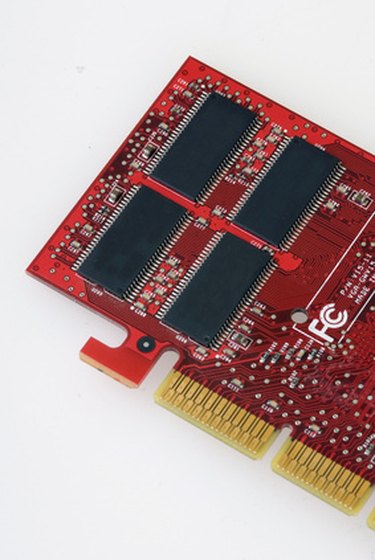
The processing power of a graphics card or video card enables a computer to produce images in faster motion and better detail, a necessity for some computer games and video software.
Function
Video of the Day
Graphics cards allow computers to produce graphics and images more quickly. A graphics card has its own processor, a GPU or graphical processing unit, according to Jason Cross at PC World. The video card connects to the motherboard and the monitor. This allows the card to accept information from the CPU (central processing unit) and send output to the monitor.
Video of the Day
Types
Graphics cards have different types of connectors for connecting to a computer's motherboard. A PCIe (Peripheral Component Interconnect Express) connector appears on most modern computer graphics cards. AGP (Accelerated Graphics Port) connectors remain somewhat popular, but the latest computers no longer use this technology. Most graphics cards no longer use simple PCI (Peripheral Component Interconnect) connections, as PCIe allows a faster communication speed.
Features
A graphics card or video card often has its own cooling system, due to the large amount of power it uses and heat it produces. Some graphics cards also have additional connections for game controllers and FireWire or other specialized outputs, according to a computer hardware resource at Missouri State.